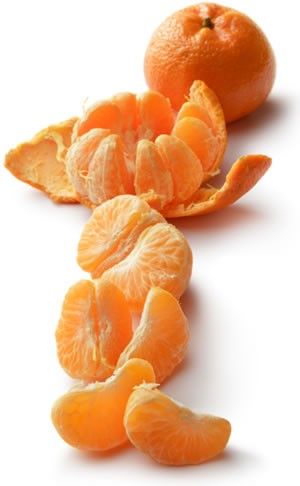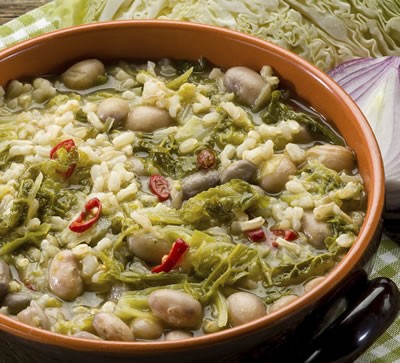The Pritikin Diet - Feel and Look Younger!
The Pritikin Diet was developed by Nathan Pritikin, a very sick man, who had been diagnosed with heart disease at age 42.
 Nathan Pritikin, founder of Pritikin Longevity Center in south Florida.
Nathan Pritikin, founder of Pritikin Longevity Center in south Florida.In the 1950's, like today, very little medical advise was offered about lifestyle changes that could help his condition. Pritikin, who was an engineer, decided to develop his own plan to reverse his disease. His heart healthy Pritikin Diet worked and he opened the Pritikin Longevity Center in south Florida in 1975 to offer his practical methods to everyone. His son, Robert, took over the center after his father's death in 1985 and it is operating today in Miami, Florida.
Pritikin's concepts were considered radical at the time, but now most of his ideas have been incorporated by organizations such as the American Heart Association.
The average American consumes 35% or more of total calories from fat. The Pritikin Diet has fewer than 10% of calories from fat. This is the key to cleaning out clogged arteries. The current "eat more fat & reduce carbs" craze (which we do not recommend) delivers more than the 35% fat and will eventually make you sick.
At his request, Pritikin's body was autopsied and his arteries were as clean as a young person's.
Pritikin Longevity Center + Spa
The focus of the Pritikin Diet plan is not food components like carbs or fats. The focus is food... healthy whole foods like fruits, vegetables, whole grains, beans, and fish.
This plan is naturally low in total fat and sodium, and rich in:
- unprocessed carbohydrates
- vitamins
- minerals
- beneficial phytochemicals
- antioxidants
- foods high in fiber
- and it has an adequate amount of protein and essential fatty acids.
On the other hand, the typical Western diet, is high in cholesterol, hydrogenated fat, saturated fat, and sodium, and it is low in fiber and many important nutrients. The typical Western diet also includes an excess of "empty" calories in the form of sugar and other refined sweeteners, refined fats and oils, and alcohol.
Click here to learn more about the Pritikin Diet.
Making optimal food choices is an integral part of maintaining a healthy lifestyle. And, when combined with exercise and mind-body health, the Pritikin Diet has been scientifically documented to:
- Improve virtually all modifiable risk factors for heart disease, the #1 killer in the U.S
- Prevent and control type 2 diabetes, high blood pressure, the Metabolic Syndrome, and several cancers
- and, promote healthy, long-term weight loss.
Learn to live a healthier life. Feel younger. Look younger. For all these benefits and more, the optimal dietary strategy, confirmed in more than 100 studies, is the Pritikin Diet plan.
 Pritikin Longevity Center in south Florida.
Pritikin Longevity Center in south Florida.Foods to Choose on the Pritikin Diet
Choose at least 5 servings of unrefined complex carbohydrates: 5 or more servings daily of whole grains (wheat, oats, rye, brown rice, barley, millet), starchy vegetables (like potatoes, yams and winter squashes), chestnuts, beans and peas. A serving is 1/2 cup cooked. Limit refined grains (such as white bread, white rice, white pasta) as much as possible.
Choose at least 5 vegetable servings: 5 (preferably more) servings of raw or cooked vegetables daily. A serving is 1 cup of raw or 1/2 cup of cooked vegetables. Include dark green, yellow, or orange vegetables daily.
Choose at least 4 fruit servings: 4 or more servings of whole fruit daily. For most fruits, a serving fits in your hand. Examples include all fresh and raw fruits, and frozen and canned fruits without added sugar.
Choose 2 calcium rich foods: 2 servings daily of calcium rich foods. Choose from nonfat milk (1 cup), nonfat yogurt (3/4 cup), nonfat varieties of ricotta and cottage cheese (1/2 cup), or soy milk (1 cup).
Choose no more than 1 serving of animal protein per day: Fish or shellfish are preferable over lean white poultry, and choose lean poultry over lean red meat. A serving is about 3 1/2 oz to 4 oz cooked, or the size of the palm of your hand and the thickness of a deck or cards.
Optimally, limit poultry to no more than one serving per week and red meat to no more than one serving per month. If you prefer red meat weekly, substitute free-range, grass-fed bison or other lean game meat in place of poultry.
Pritikin Diet - "Go" Miscellaneous
 Eat 4 or more servings of whole fruit daily.
Eat 4 or more servings of whole fruit daily.Beverages: Water (plain, bottled, low-sodium, mineral), hot grain beverages (coffee substitutes), non-medicinal herbal teas (such as peppermint, rose hips, or chamomile), and cocoa powder - up to 2 tablespoons per day (use non-alkali processed). You do not have to drink large amounts of water daily. Simply drink when thirsty.
If you choose to drink caffeinated beverages, we recommend no more than 8 cups of caffeinated tea OR no more than 4 cups of caffeinated coffee per day (1 cup=8 ounces).
Alcoholic beverages: Use in moderation or not at all. For women, up to 4 drinks per week, with no more than 1/2 to 1 drink per day. For men, up to 7 drinks per week, with no more than 1 to 2 drinks per day.
A drink is approximately 5 oz of wine, 12 oz of beer, or 1 to 1 1/2 oz of 80 proof liquor. Choose red wine over white wine, wine over beer, and either over liquor.
Garnish/herbs: Culinary herbs are rich sources of many beneficial phytonutrients, and are a good way to add flavor without extra calories, fats or salt. Include at least 1 to 2 teaspoons of dried herbs or 1 to 2 tablespoons of fresh herbs each day.
Egg whites: Limit to 1 to 2 egg whites per day.
If you want to lose weight: A healthy weight loss program includes eating more vegetables, including dark green, yellow, red, or orange vegetables...the more the better!
Limit calorie-dense foods such as dried grains (breads, crackers, cold cereals), dried fruits, nuts, and seeds. Avoid refined or concentrated sweeteners. They all pack a lot of calories into very small amounts of food. You'll find it much easier to feel full, satisfied and curb your hunger if you focus instead on high-water, high-fiber foods like cooked grains (such as oatmeal and brown rice), vegetables, and whole fruits. You'll eat more and weigh less.
 Here's to your health...a deliciously prepared bowl of unrefined complex carbohydrates.
Here's to your health...a deliciously prepared bowl of unrefined complex carbohydrates.Go easy on fruit and vegetable juices because they provide less satiety than whole fruits and vegetables.
If your weight is fine: Celebrate! Eat as many whole grains, and vegetables, legumes (such as beans and peas), and fruits as you want. Enjoy more calorie-dense foods such as avocados and nuts, but limit them to keep you weight under control. Limit avocado intake to no more than 2 ounces per day. Limit walnuts, flax seeds, almonds, pumpkin seeds, pecans, pistachios, sunflower seeds, filberts (hazelnuts), peanuts, cashews, and macadamia nuts to no more than 1 ounce per day.
Artificial Sweeteners: While artificial sweeteners have not been proven to aid weight loss, they may be of benefit to people with diabetes, elevated triglycerides, and those following the Pritikin Diet plan to lose weight. Limit intake to not more than 10 to 12 packets per day. Sucralose (Splenda) appears to be the safest choice.
Pritikin Diet "Caution" - The Less, the Better
 Relax and relieve stress at the Pritikin Longevity Center.
Relax and relieve stress at the Pritikin Longevity Center.What if you feel stuck and need to adjust your choices? Enter category 2: Caution - The Less, The Better. While "Caution" foods are not recommended, this list provides direction when food choices are limited.
Refined fats and oils: Limit the consumption of ALL oils to no more than 1 teaspoon per 1000 calories consumed, especially if you're trying to lose weight, because oils have the highest calorie density of any food or ingredient.
Refined sweeteners: For healthy individuals who choose to use sweeteners, a suggested rule of thumb is a maximum of 2 tablespoons of fruit juice concentrate or 1 tablespoon of other refined sweeteners (such as barley malt, corn syrup, rice syrup) per 1000 calories consumed. None is optimal. Avoid fructose and high fructose corn syrup.
Salt and high-sodium foods, condiments: Avoid added salt, and highly salted, pickled and smoked foods. Limit foods that have more than 1 mg of sodium per calorie so as not to exceed 1200 to 1500 mg ov sodium per day, depending on age.
Pritikin Diet "Stop" - Stay Away
When faced with foods in the "Stop" category, search for choices in the "Go" category, and if necessary, "Caution foods. "Stop" foods, due to their high content of saturated fat, hydrogenated fat, cholesterol, and/or sodium, may significantly compromise your personal health goals.
Limit the following choices to less than once per month. None is optimal.
Animal fats, tropical oils and processed refined oils: Such as butter, coconut oil, palm kernel oil, lard, chicken fat, palm oil, cocoa butter, chocolate, margarine, hydrogenated and partially hydrogenated vegetable oils, and shortenings.
 Carefully planned meals await you at the Pritikin Longevity Center.
Carefully planned meals await you at the Pritikin Longevity Center.Meats: Such as fatty meats, organ meats, and processed meats (hot dogs, bacon, and bologna).
Whole and low-fat dairy: All cheese, cream, cream cheese, half-and-half, ice cream, milk, sour cream, and yogurt, unless fat-free and low in sodium.
Nuts: Coconuts.
Salt substitutes: Potassium chloride.
Miscellaneous: Egg yolks, deep fried foods, non-dairy whipped toppings, rich desserts and pastries, and salty snack foods.
OFFERINGS at the Pritikin Longevity Center + Spa
Today at the center in Miami, Florida there are many different Pritikin Diet plans available. The on campus programs include the following:
- Healthy Weight Loss
- Lower Cholesterol
- Heart Healthy
- Control Diabetes
- Lower Blood Pressure
- Healthy Mind
Visit the Pritikin Longevity Center + Spa website. They even have a "Pritikin at Home" program that is offered on line at a very affordable rate.
Explore more...
- Food As Medicine - Hippocrates (460 - 370 BC) the father of modern medicine said it all: "LET FOOD BE YOUR MEDICINE AND MEDICINE BE YOUR FOOD."
- Alkaline foods - Healthy diet plans are naturally heavily loaded with alkaline foods.
- Facts About the Atkins Diet - A diet we would avoid.
- The Protein Myth - is the idea that animal products are the only way to get quality protein.
- Fasting For Health - is about interrupting your food intake to cleanse the body and mind.





